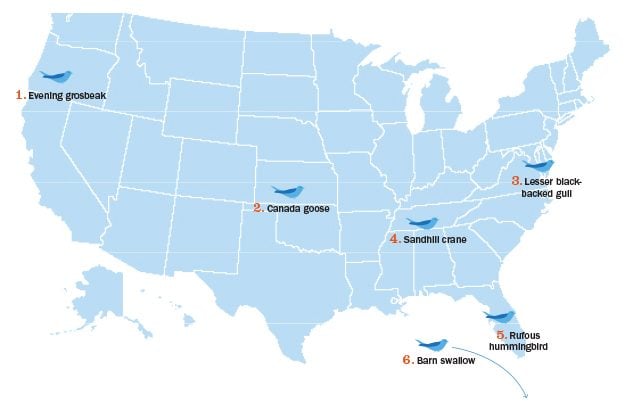6 Bird Migration Patterns That Have Changed
Updated: Mar. 21, 2024
From rufous hummingbirds to Canada geese, discover some of the ways bird migration patterns are shifting for certain bird species.
Migration time: It’s one of the most rewarding parts of watching birds. The way migratory birds show up right on time in spring and fall, with each species following its own schedule, is both enjoyable and reassuring. But even though the routes and timetables may seem predictable, some birds do change their flight patterns over the years or decades. Here are a few examples of bird migration patterns that have changed. Learn more bird migration secrets.
Rufous Hummingbird Migration Pattern
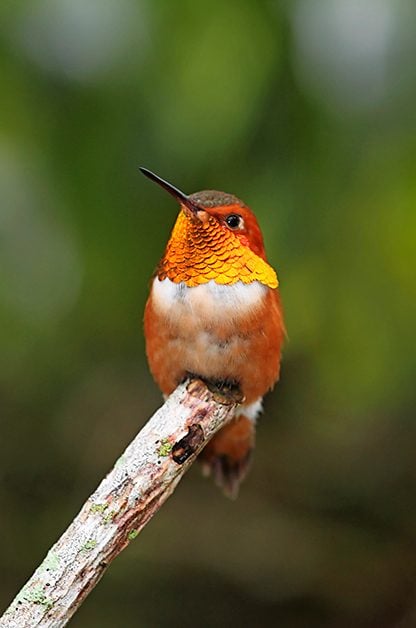
Angling Eastward
Nesting in the Northwest, from Wyoming to southern Alaska, rufous hummingbirds have traditionally spent the winter in Mexico. A few had always wandered east in fall, but until recent decades, they would not have survived the winter there. Now, however, gardeners all over the Gulf Coast and beyond have established winter havens for hummingbirds, with flowers that bloom through the season and plenty of sugar-water feeders. From east Texas to Florida and north at least to the Carolinas, hundreds of rufous hummingbirds now spend the entire winter, and some individuals may come back to the same gardens year after year. Learn more about where hummingbirds migrate in winter.
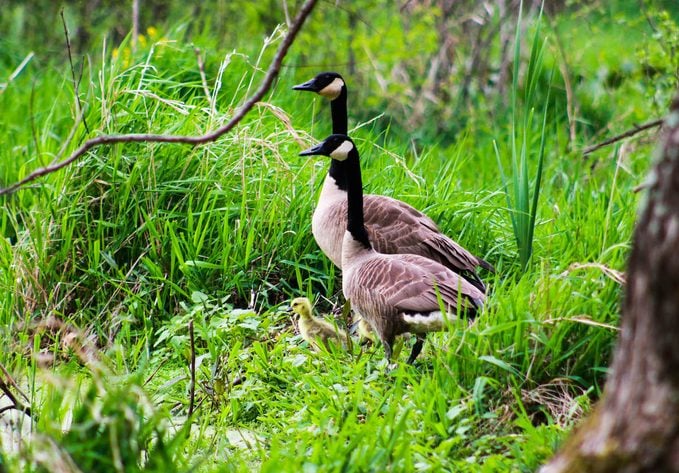
Canada Geese Migration Pattern
Year-Round Residents
Once, Canada geese were symbols of the wilderness. In most parts of the U.S., they were absent in summer. Their flocks would arrive from the north along with the cold winds of autumn, and they would leave to go back to Canada early in the spring.
As recently as the 1950s, some people feared that Canada geese might disappear completely. Various state wildlife agencies began trying to establish new flocks by raising young geese in captivity and releasing them locally. But because geese learn bird migration patterns from their parents, these newly introduced flocks lacked the know-how to migrate, so they became permanent residents. Today they are found year-round in wild marshes, city parks and golf courses over much of the U.S. Meanwhile, flocks of wild geese still migrate from the Arctic to the central states and back again, overlapping in some seasons with their nonmigratory cousins. Check out the best birding hotspots for spring migration.
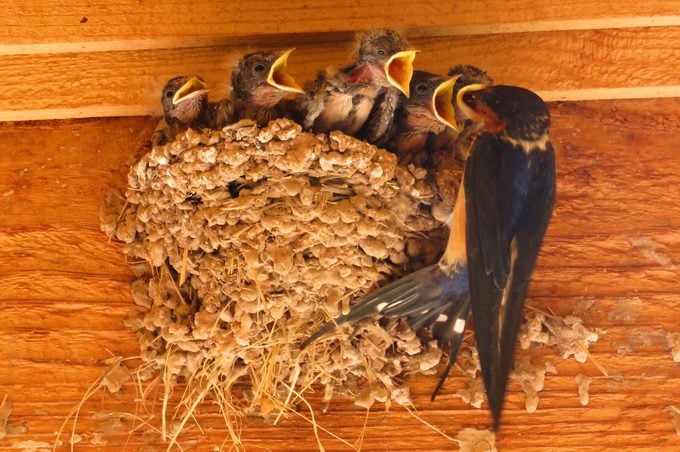
Barn Swallow Migration Pattern
Nesting in South America
There are dozens of kinds of long-distance migrant birds from North America that fly to South America for the winter. But these migratory birds never stay to nest on the southern continent. Well, almost never.
During the last few decades, barn swallows have broken all the rules of bird migration patterns. They had always been known as wintering birds all over South America. In 1980, observers were startled to find six pairs actually nesting and raising young near Buenos Aires, Argentina. It seemed like a fluke, but it was really the start of something big. Their numbers have increased ever since, and there are now thousands of pairs of barn swallows nesting in Argentina—a range extension of about 4,000 miles from anywhere they had nested before! Learn to identify 8 types of swallows.
Lesser Black-Backed Gull Migration Pattern
More Common in North America
In Europe, lesser black-backed gulls are common. But they were never found in this country until 1934, when a single bird appeared in New Jersey. The species continued to be a very rare winter visitor until the 1970s, but then numbers started to increase.
Were these gulls just getting better at flying from Europe to North America? No. They had begun nesting in Iceland, much closer to this continent, and the increasing population there made it easier for a few to reach our shores instead of going back to Europe for the winter. By 1990 there were colonies of them nesting in southwest Greenland, even closer to eastern Canada and the U.S. Lesser black-backed gulls are no longer rare on our side of the Atlantic; they have been seen throughout the lower 48 states and most of Canada, and dozens or even hundreds may be found at some sites in winter. Learn more about coastal fliers and beach birding locations.
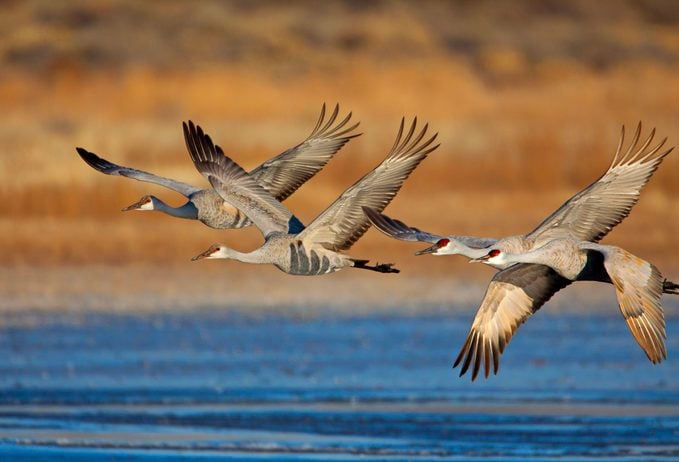
Sandhill Crane Migration Pattern
Expanding Winter Range
Sandhill cranes have a complicated distribution. Some flocks spend the winter in Texas or Mexico and migrate north to Alaska, even crossing to Siberia. Some other flocks are year-round residents of Florida or other warm places. The population from the upper Midwest used to migrate to Florida for the winter, but now their winter range is expanding.
At one time, sandhill cranes nesting in Minnesota, Wisconsin and Michigan would spend part of the fall in portions of Indiana and Michigan before flying down to central Florida. But in recent years, many of those migrants have stayed later and later in the Midwest, and then have flown only partway to Florida, stopping off in Georgia, Alabama or Tennessee. Several thousand cranes now go only as far south as Tennessee, staying a few weeks before turning around and starting north in very early spring. A few have even spent the winter as far north as Ohio. Check out the best birding hotspots for sandhill crane migration.
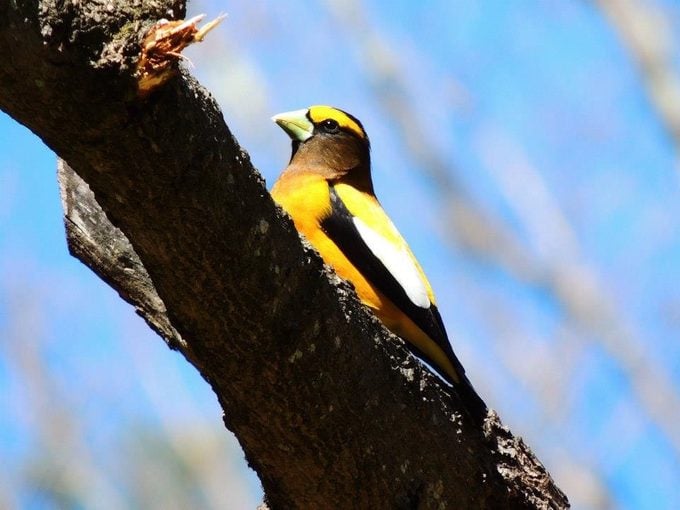
Evening Grosbeak Migration Pattern
Declining Range
North America has several kinds of “winter finches,” as birders call northern species that irregularly wander far south in winter. One of the most striking is the evening grosbeak. Flocks of these big finches, colored like burnt gold, used to come sweeping south during some winters, swarming around feeders in the Northeast and Midwest. They would gobble up prodigious amounts of sunflower seed before they moved on, so backyard birders saw them as a mixed blessing.
In recent years, however, evening grosbeaks have become scarce visitors south of the boreal forest. In places that used to see hundreds, they may not show up at all. No one really knows why the grosbeaks aren’t coming south any more.
Stories like the evening grosbeaks’ make bird-watching endlessly fascinating. Even if we knew absolutely everything about bird migration patterns, the birds keep us on our toes by changing the rules, reminding us that we should never stop seeking, never stop learning and never stop caring.
Check out 5 grosbeaks backyard birders should know.
Changing Bird Migration Patterns
- Evening grosbeaks aren’t showing up in as many areas as they used to, but they are still common in Oregon and other parts of the West.
- Canada geese were once thought of as exclusively migratory, but now they remain in many states, including Kansas, year-round.
- Lesser black-backed gulls began showing up regularly in the New Jersey area in the 1970s, and they are now fairly common winter visitors.
- Sandhill cranes that used to migrate to Florida or the winter are now finding alternatives such as Tennessee.
- Rufous hummingbirds no longer just fly to the tropics for the winter. Now they will go south to areas like Alabama and Florida.
- Barn swallows were always known for flying to South America for winter but nesting in North America. However, now they are nesting down there, too.
